#when it will end. Text form communications are ongoing background interactions with no clear start or end. no structure. etc.
Explore tagged Tumblr posts
Text
REVIEW: BURIED STARS ☆

came across this korean mystery vn and i knew i had to get it bc someone commented that it had a similar feel to danganronpa/zero escape O: seems like i have a type
i usually don’t prefer to get digital copies of games but there was really no choice... i heard the physical copy is sold out in korea and resales are going for 200 USD ain’t nobody got money for that
i don’t think anyone i know is gonna purchase this game and play for themselves and i can’t share the game either bc it’s a digital copy sooo i’m gonna write a review~ please enjoy!!
basically the plot goes as such: the survival reality tv show Buried Stars was about to commence the finals of its current season with the remaining five contestants when the building suddenly collapses. most of the audience and staff members were safely evacuated except for seven ppl (the five contestants and two staff members) who are trapped in the wreckage with just their smartwatches that connects them to the outside world via calls (problematic bc they can only call a restricted number of ppl and the signal inside is shit) and phater (bootleg twitter). after trying to make some calls, everyone was then told that the rescue team would take around six hours to break into the collapsed building to get them out.
ok so they just have to wait it out... in an unstable building that can come down at any moment. cool.
then!!! they find the producer’s dead body, seemingly a victim to the falling debris!! they’re down to six survivors now.
despite the circumstances, voting is still ongoing and some rando on phater claims that the contestant in the last place will die as if the atmosphere wasn’t bad enough.
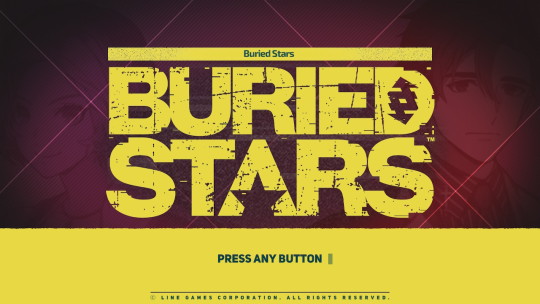
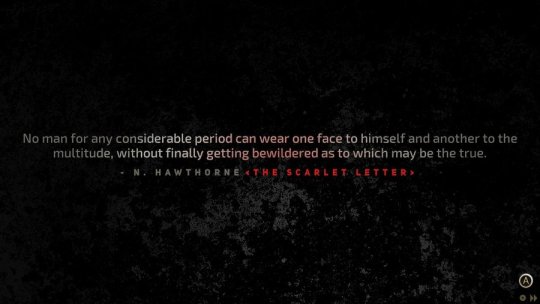
this is your smartwatch interface!! most of the functions are pretty useless with regards to the actual gameplay but it’s just fun to play around with them i guess
for e.g. you can change the background and ringtone but they don’t affect anything
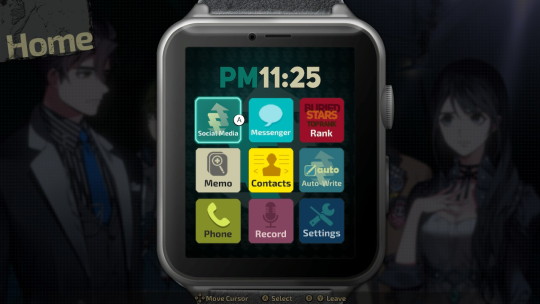
there’s this feature that keeps track of changes that occur when you pick certain conversation topics during communication rounds and it’s really useful for replays!! too bad it doesn’t keep track of sanity changes in mc
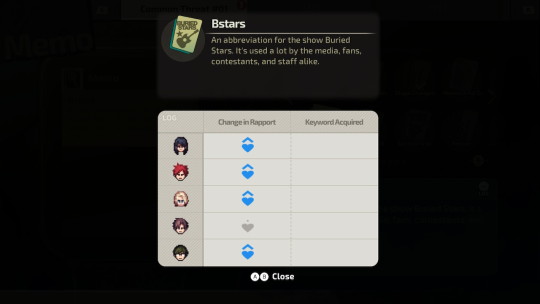
this is the mc!! even though he looks like he would be a tsundere punk he’s actually very soft?? kinda like saihara but with a bit more spine

AND THIS IS MY BEST BOI GYU-HYUK
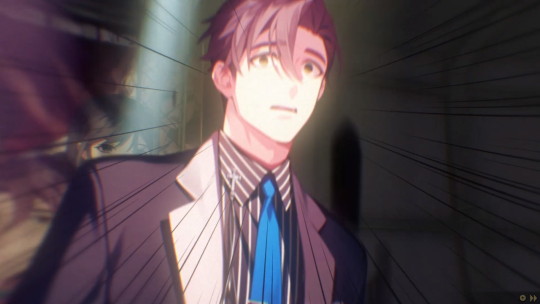
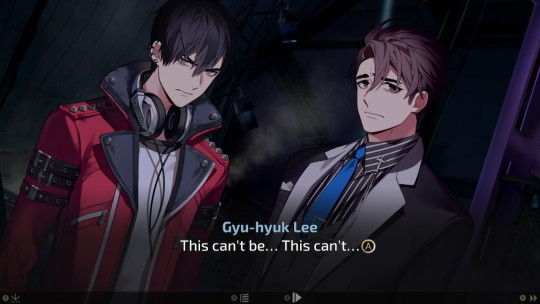
i lowkey ship them bc of their interactions alsjdkasjs jUST LOOK AT THIS
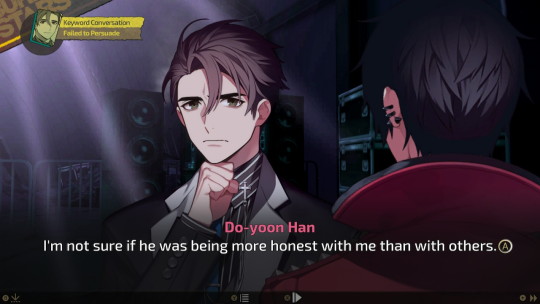

i was expecting there to be a lot of mysteries but given the circumstances i guess it makes sense to not have that many... there’s no murder mystery if it happened in an accident site and looked like an accident you see
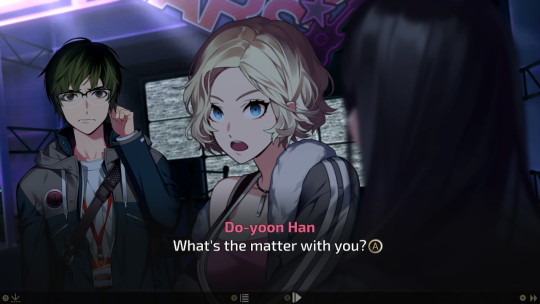
a lot of conversation topics focus on the character’s backstory and stuff so you get to learn more about the characters while waiting for rescue (one of the goals of this game is actually to collect characters’ profiles!)
bonding through a shared traumatic experience sounds reasonable

did i mention that the cutscenes are fully voiced (either in korean or japanese depending on your preference)?? i played it in korean for my first gameplay for ~Optimal Experience~ but i switched to japanese in subsequent plays bc i wanted to be able to understand what the characters were saying without reading the text
the only thing that throws me off is that characters are given japanese names in the japanese dub but the in-game text still uses their korean names??? why
my boi gyu-hyuk is voiced by takuya eguchi and hyesung is voiced by shimono hiro (i actually doubted my ears at first bc hyesung sounds angry 24/7 and i only know shimono’s derpy zenitsu and troll ouma voices sweats;;) wOW 👍👍👍
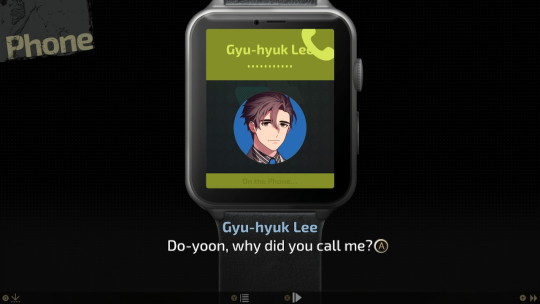




the first ending is the same for everyone even if you picked the best options
they call it a “normal end” but tbh it’s a bad end bc everyone dies and nothing is resolved
after you clear the game for the first time you will get to replay from the start but your options will change so you can proceed towards other routes!! yay
oh yeah in case anyone is wondering this game is rated T and bodies are shown in the form of a silhouette with non-explicit close-ups during investigation so if you can’t handle graphic stuff it’s not too bad
warning: from here on there will be spoilers for the true ending and other endings!! stop scrolling if you have even the slightest intention to play the game
.
.
.
.
.
.
collected all the endings after 30ish hours of gameplay!! i wanted to strive for 100% completion in achievements but i’m not sure how to get some stuff... might go back and try other options in the future

in the true route you receive help from this random phater user plughole aND I JUST LOVE THE INTERACTIONS BETWEEN HIM AND DO-YOON LMAO




idk if anyone tried to guess who the real culprit is but it turned out to be
my boi gyu-hyuk......
he had his reasons (not trying to say he did no wrong) and it’s just unfortunate that things turned out this way
while playing, i thought to myself... if there was one person i would glue do-yoon to throughout the entire game it would be gyu-hyuk... bc i was certain he wouldn’t hurt do-yoon
i was right tho... even in some routes where do-yoon catches him in the act, gyu-hyuk didn’t try to silence him


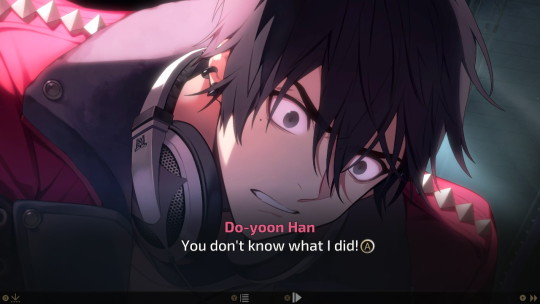

CRYING
i don’t know much about korean law but he has THREE murder charges on him whicH SOUNDS LIKE DEATH SENTENCE
i’m sad bc there’s no way to save my boi even in his best ending

plughole visits you in the hospital in the true ending!! he is also a troll irl it seems
he was kinda sus in the beginning but i really hoped that he was a Good Guy to keep do-yoon sane in the wreckage
and i’m glad he was

do-yoon looks super baby in his hospital clothes

he was not kidding when he said that his actions were bc of his sister (who is a hardcore fan of do-yoon) lmao
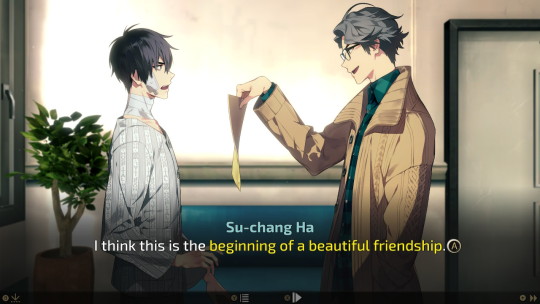
aaa the girls are doing great after their treatment!! they visit do-yoon too!!

yeah i also want to know why do-yoon is the only one still hospitalised with all those bandages when everyone else is fine but i guess maybe he got injured when he protected gyu-hyuk from falling debris at the start of the game
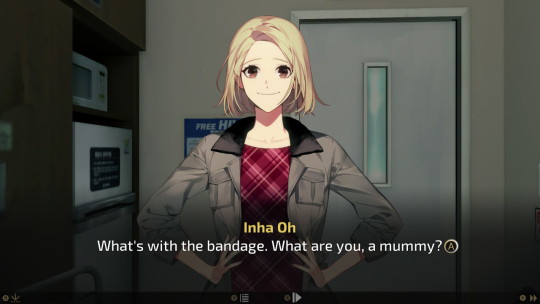
...
if you don’t find out the true culprit of the murders gyu-hyuk goes free and he visits you every day in the hospital aND SAYS STUFF LIKE THIS
ugh it hurts me
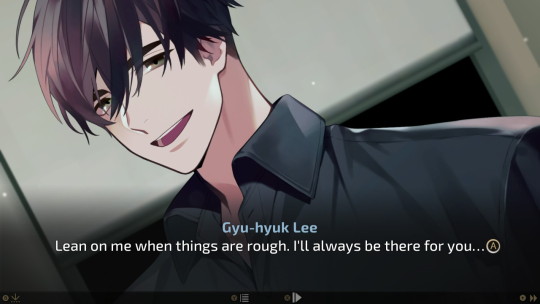
...
there’s also a joke ending (when you pick the “i’m the attacker” option lmao) which i appreciate a lot!! something to lighten the tense mood is what i crave for in games like this
somehow i feel like it’s even scarier than the usual atmosphere bc of how ooc everyone acts
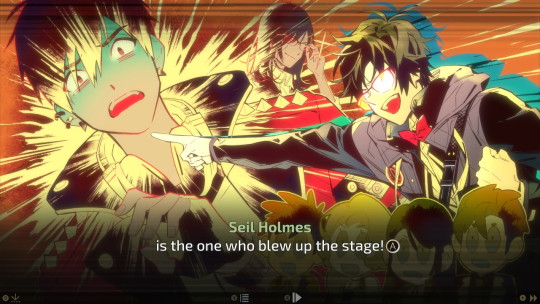
BUT YOU WANT TO KNOW WHAT’S REALLY SCARY?
there’s a horror route that you can enter by using the “laboratory” conversation topic on everyone and expressing how much it creeps you out
and the entire game shifts in genre to actual horror (like with paranormal activities)
IT WAS REALLY SCARY AND THERE WERE HANDS EVERYWHERE AND EVERYONE WAS ACTING WEIRD ASLJELKASJ i had my eyes closed half the time and i regret playing on my monitor

i didn’t take many screenshots bc as i mentioned my eyes were not looking at the screen for most part but i hope that you can kinda understand where i’m coming from with these two screenshots
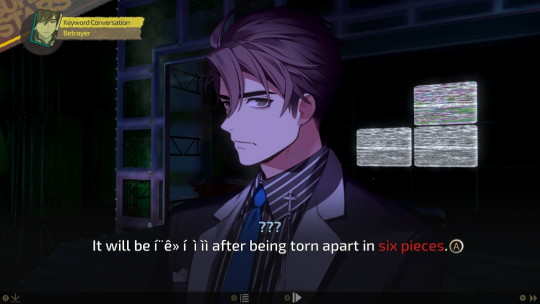
...
the game is actually split into two major routes (A and B) which differ in who gets saved and who dies
you can only start on the B route after you get the true ending which is in the A route
unfortunately there is no route where everyone (even if you exclude the producer bc she dies before do-yoon regains consciousness at the start of the game) survives TT

if hyesung and seil survive then gyu-hyuk kills himself and leaves a note but do-yoon tears it up so we don’t know what he wrote


overall a solid mystery vn with beautiful graphics and enough routes to keep you occupied for many hours!! i highly recommend following a walkthrough bc it’s not an easy game if you want to collect all the possible endings and achievements
cuz there are minor changes to the epilogue depending on how close you are with the characters
i actually don’t play a lot of VNs but i feel like all VNs need the route map thingy in AI: the somnium files
my only gripe about this game is prob the derpy translations which usually isn’t a big issue (imo at least) but for a game priced this high?? i expected better
anyway that’s all from me!! thanks for reading til the end hahah i wanted to write a srs review but i just ended up simping for gyu-hyuk
4 notes
·
View notes
Text
Assessment Purposes Notes Continued
Within this post I have outlined some notes pertaining to my assessment and evaluation course.
The task was to research assessment in Ontario. Identify some key words and concepts to learn more about throughout the course and comment on initial understanding of assessment and evaluation.
Learning For All page 1-32
Quotes
“All students learn best when instruction, resources, and the learning environment are well suited to their particular strengths, interests, needs, and stage of readiness” (page 8).
Three core priorities for education in Ontario:
-High levels of student achievement
-Reduced gaps in student achievement
-Increased public confidence in publicly funded education
Our Shared Beliefs
-All students can succeed.
-Each student has his or her own unique patterns of learning.
-Successful instructional practices are founded on evidence-based research, tempered by experience.
-Universal design and differentiated instruction are effective and interconnected means of meeting the learning or productivity needs of any group of students.
-Classroom teachers are the key educators for a student’s literacy and numeracy development.
-Classroom teachers need the support of the larger community to create a learning environment that supports all students.
-Fairness is not sameness.
Three Elements Critical to the Process:
-Personalization: learner at the centre, providing assessment and instruction that are tailored to students’ particular learning and motivational needs.
-Precision: links “assessment for learning” to evidence-informed instruction on a daily basis; instruction that is precise to the level of readiness and the learning needs of the individual student.
-Professional Learning: ongoing learning for every educator “in context”
Achievement Gap
-Disparity in achievement between groups of students.
-Factors, such as gender, ethnocultural background, socio-economic status, special education needs, language proficiency, or number of credits accumulated by the end of a particular grade and combinations.
Learning Gap
-Gap between a student’s actual achievement and his or her potential for achievement.
Three Effective Approaches
1) Universal Design for Learning
2) Differentiated Instruction
3) Tiered approach to prevention and intervention
Universal Design for Learning
Core Concepts:
-Universality and equity: draw on the strengths and meet the needs of all students; reflects awareness of the unique nature of each learner and the need to accommodate differences
-Flexibility and inclusiveness: planning sufficiently flexible to provide real learning experiences; materials that are relevant, engaging, and responsive; make use of all the senses; vary in form, level of difficulty, and manner of presentation
-An appropriately designed space: all students have a clear line of sight; all learning materials, including print, electronic, and interactive texts, are within comfortable reach of all students; adequate space for assistive devices or teacher’s assistants
-Simplicity: minimize distracting information; communicating consistent and achievable expectations; collaborating with students to construct learning goals; arranging information sequentially; breaking instructions down into small steps; providing descriptive feedback during the learning
-Safety: safe in both the physical and the emotional sense of the word; caring and safe environment that is engaging, inclusive, and respectful of all students and promotes student achievement and well-being
Checklist
-over all design of programs, use of space, and presentation of information;
-equity and accessibility for all students;
-flexibility and inclusiveness;
-simplicity and safety.
-Multiple means of representation
-Multiple means for action and expression
-Multiple means for engagement
Differentiated Instruction
-Differentiated instruction allows teachers to address specific skills and difficulties.
-To differentiate instruction is to recognize students’ varying levels of background knowledge, readiness to learn, language ability, learning preferences, and interests, and to react responsively
-Differentiated instruction (DI) is based on the idea that because students differ significantly in their strengths, interests, learning styles, and readiness to learn, it is necessary to adapt instruction to suit these differing characteristics.
-The content of learning
-The process of learning
-The products of learning
-The affect/ environment of learning
Differentiated instruction includes:
-providing alternative instructional and assessment activities;
-challenging students at an appropriate level;
-using a variety of groupings to meet student needs.
Zone of Proximal Development
-Within the ZPD, the student may not yet be capable of solving a particular kind of problem on his or her own, but can do so with assistance and is supported to move on to another level of knowledge.
-Scaffolding: provides such support at the right times in the student’s cognitive development
Eight types of intelligence
-verbal/linguistic;
-logical/mathematical;
-visual/spatial;
-musical/rhythmic,
-bodily/ kinesthetic;
-interpersonal;
-intrapersonal; and
-naturalist
Checklist
-suit diverse learning styles and preferences;
-engage students with diverse interests;
-support students who are at different stages in their readiness to learn and provide scaffolding, emotional support, and opportunity for practice.
-Vary Content
-Unpack big ideas
-Introduce new learning and pose open questions in ZPD
Instructional Strategies to Support UDL and Differentiated Instruction
-cooperative learning,
-project-based approaches,
-problem-based approaches,
-explicit instruction
The Tiered Approach
“Tiered’ approach, which sequentially increases the intensity of instructional interventions” (page 24).
-Address both academic and behavioural needs
Tiered approach can:
-Facilitate early identification of both students who may be at risk and students who may be in need of greater challenges;
-Ensure appropriate and timely intervention to address these students’ needs and significantly reduce the likelihood that they will develop more intractable problems in the future.
Checklist
-continuum of support and a range of strategies
-appropriate adjustment of instruction or goals in response to observations
-timely and appropriate preventive strategies, and of intervention strategies of increasing intensity, as needed
-student response data to aid in decisions
-prompt implementation of next steps
-Use strategies that are guided by the principles of UDL and DI to support the learning of all students
-Use ongoing monitoring of learning
-Monitor student work closely at Tier 1 and rely on observation and assessment data
-timely and appropriate interventions
-problem solve collaboratively
-access available resources outside the classroom
Assessment For Learning
Types of assessment are:
-Assessment for learning
-Assessment as learning
-Assessment of learning
“Assessment for learning contributes significantly to improving student achievement” (page 28).
Enable both the teacher and the learner to determine:
-where the learner is in his or her learning;
-where the learner needs to go; and
-how best to get there.
Diagnostic Assessment
-Conducted before instruction begins and provide teachers with information about students’ readiness to learn, and about their interests and attitudes
-Establishes the starting point for new learning, and helps teachers and students set appropriate learning goals
- Information gathered from various sources: student, previous teachers, parents, formal sources (OSR).
Formative Assessment
-Conducted frequently and in an ongoing manner during learning and is intended to give teachers and students precise and timely information so that instruction can be adjusted in response to individual students’ strengths and needs
-Information gathered is used for the specific purpose of helping students improve while they are still gaining knowledge and practising skills
-Provide benchmarks to confirm the suitability of instructional strategies and specific interventions for individual students as well as groups of students
Reliability of Assessment:
-identification, clarification, and sharing of learning goals
-student’s understanding of the success criteria
-descriptive feedback that helps students consolidate new learning
-self-assessment that motivates students to work more carefully and recognize their own learning needs
Checklist
-Break and/or combine curriculum expectations to create appropriate learning goals
-Collaborate with students to create success criteria
-Apply assessment strategies that can accurately reflect student progress and achievement.
-Provide students with timely descriptive feedback
-Monitor students’ progress, gather evidence in a variety of forms, illustrate students’ learning and growth through ongoing documentation
-Adjust instruction on the basis of assessment data
-Engage students as partners in the learning process
Major Concepts to Explore
The three approaches to teaching and the types of assessment, especially assessment for learning, are the major concepts to explore further. Expanding my understanding of how to implement these into my teaching and critically analyzing the impact of these teaching approaches in my classroom, will allow me to improve my practice as an educator.
The next post will provide some key information on the document “Foundations of Professional Practice.”
0 notes